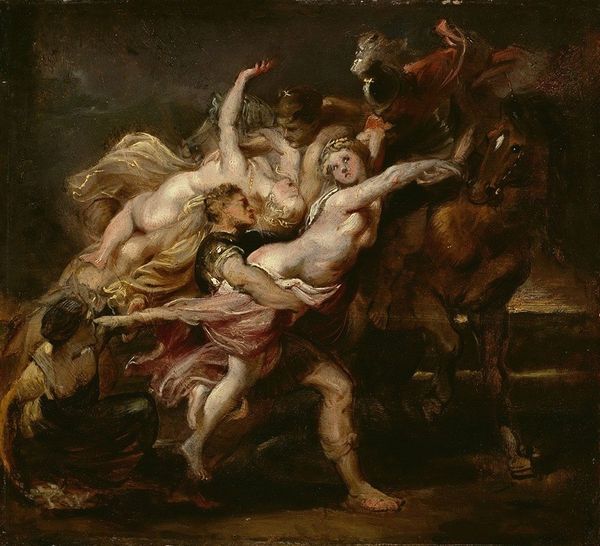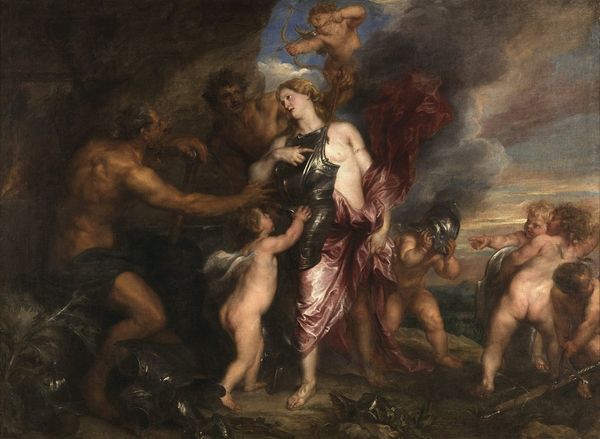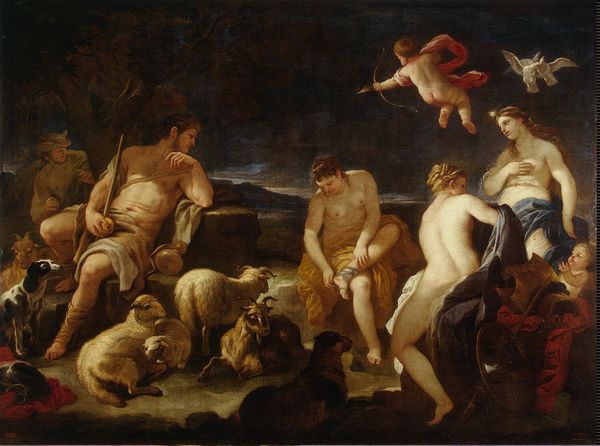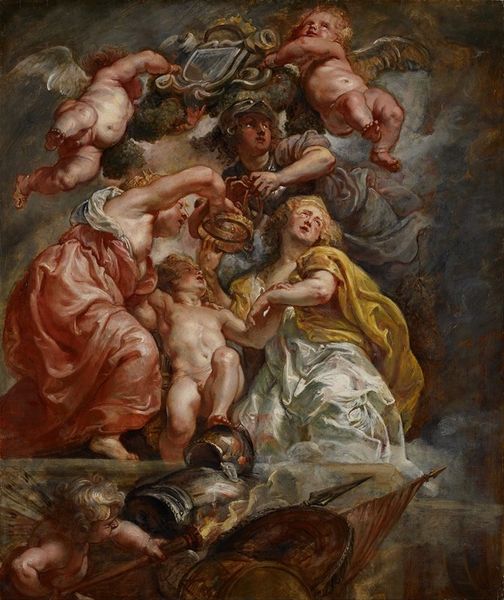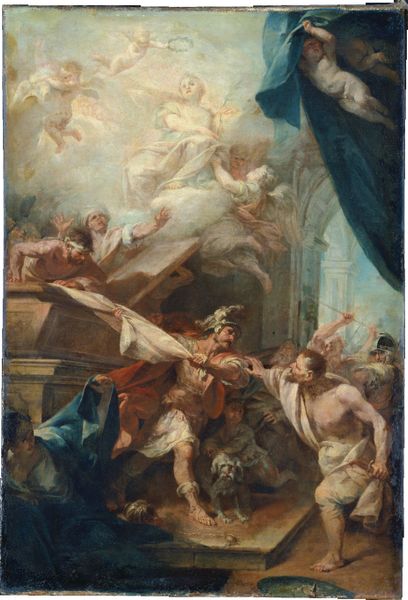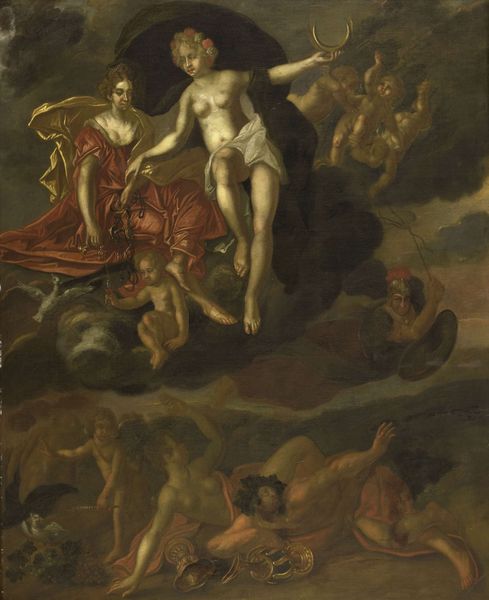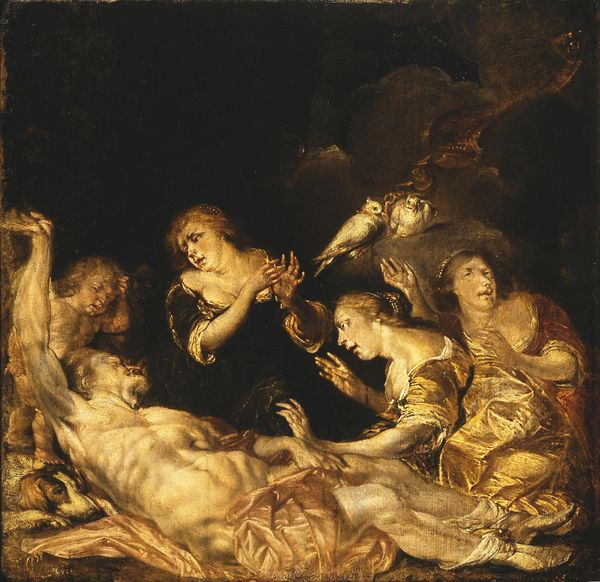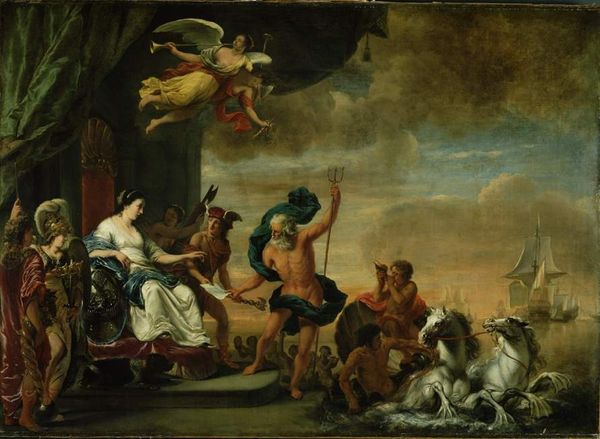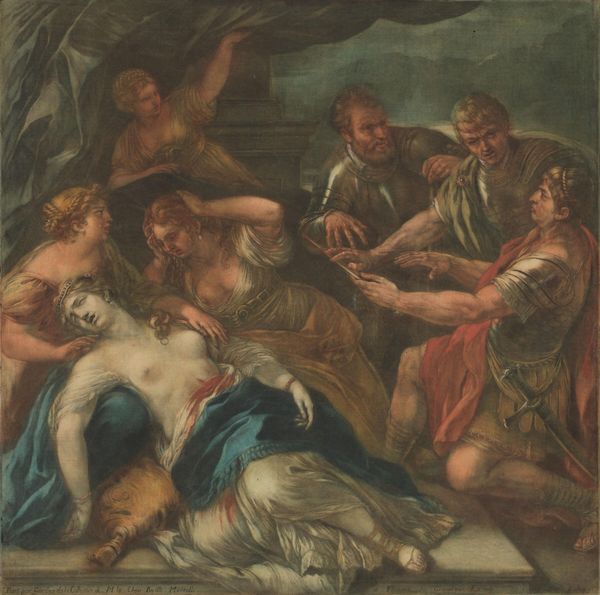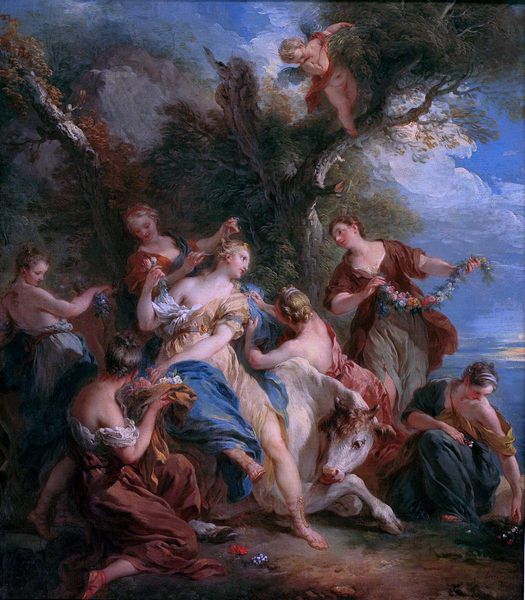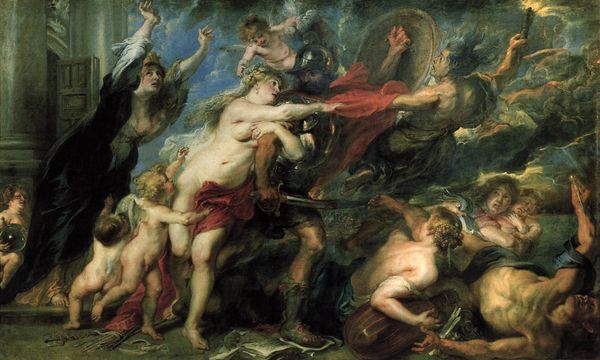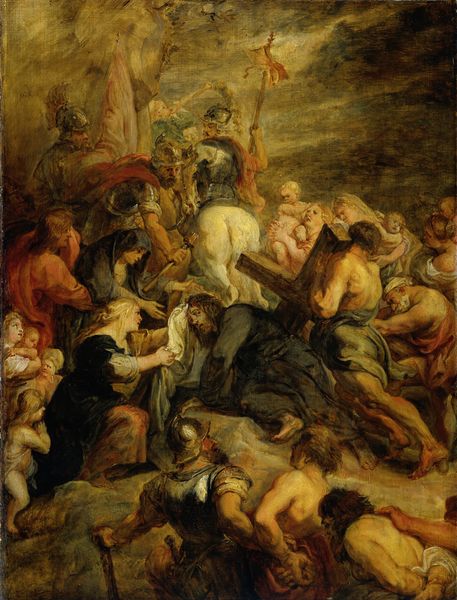
oil-paint
#
baroque
#
oil-paint
#
figuration
#
oil painting
#
history-painting
#
nude
Copyright: Public Domain: Artvee
Editor: This is "The Capture of Samson," painted by Peter Paul Rubens around 1609-1610, using oil paints. It’s quite dramatic, almost theatrical. The figures are very dynamic. What's your take on it? Curator: For me, this painting speaks volumes about production. Consider the source of the pigments. Where did Rubens get those vibrant colors, and who ground them? Each shade tells a story of global trade and localized labor. Editor: So, you're saying the materials themselves are significant? Curator: Precisely. Look at the scale, too. Rubens likely employed assistants. How does the division of labor impact the "artistic genius" we traditionally associate with him? Did his assistants share their knowledge or techniques? How does that shared labor contribute to, or detract from, the individual "genius" attribution? Editor: I never considered the socio-economic side of making art back then. Curator: Also, what’s the context of oil paint in 17th century Europe? Its durability and relative ease of use revolutionized painting compared to earlier techniques. How does the rise of this particular material shape artistic styles and narratives? Think about the consumer, too; where would this painting be displayed, and who would have the wealth to commission such a work? What needs were Rubens and his contemporaries trying to meet? Editor: So much to think about beyond just the image itself! It changes how I view Rubens. Curator: Exactly! By focusing on materials and production, we uncover the intricate web of factors influencing art creation, moving past romantic notions of solitary genius to consider collective effort and economic realities.
Comments
No comments
Be the first to comment and join the conversation on the ultimate creative platform.
